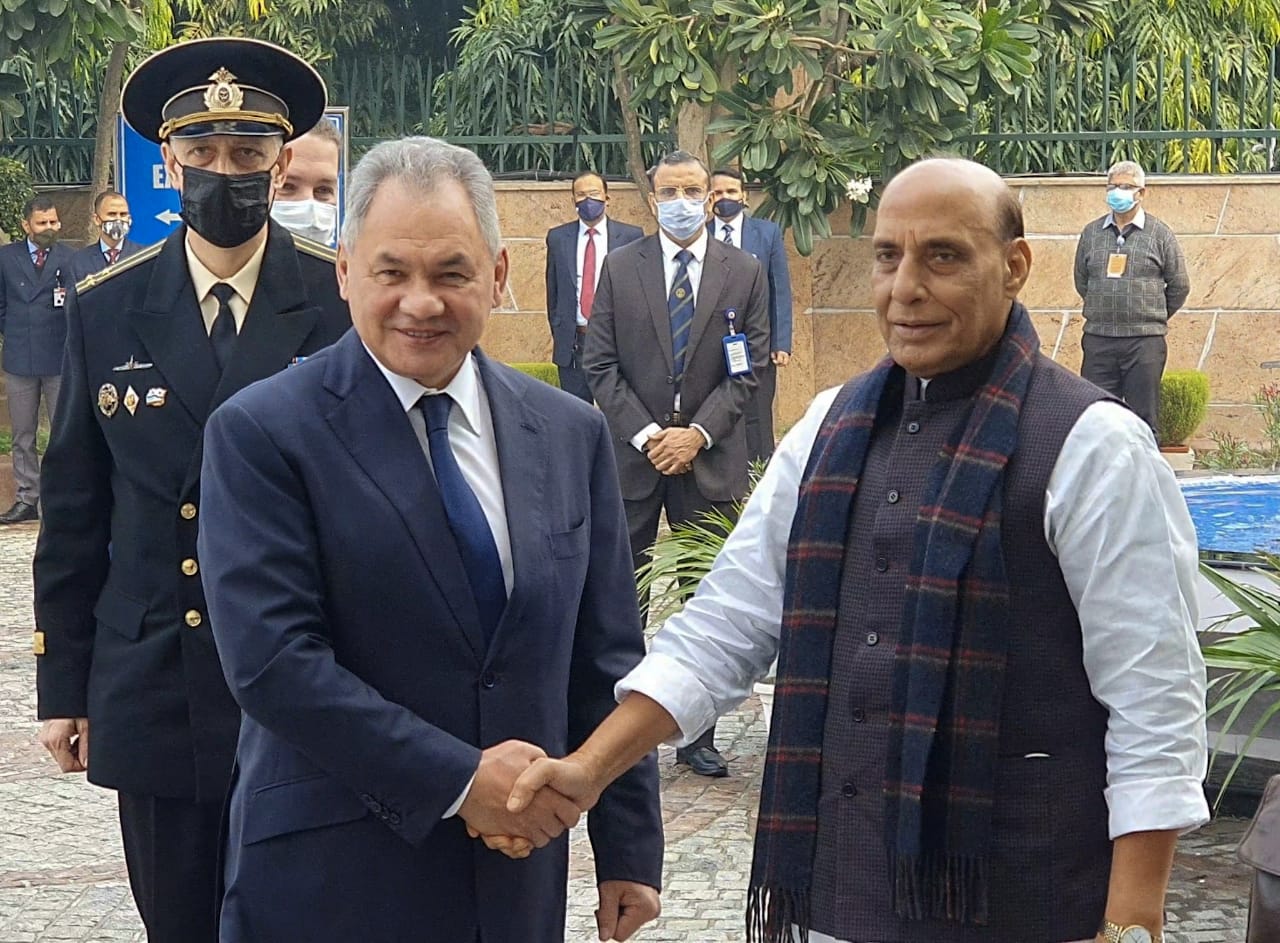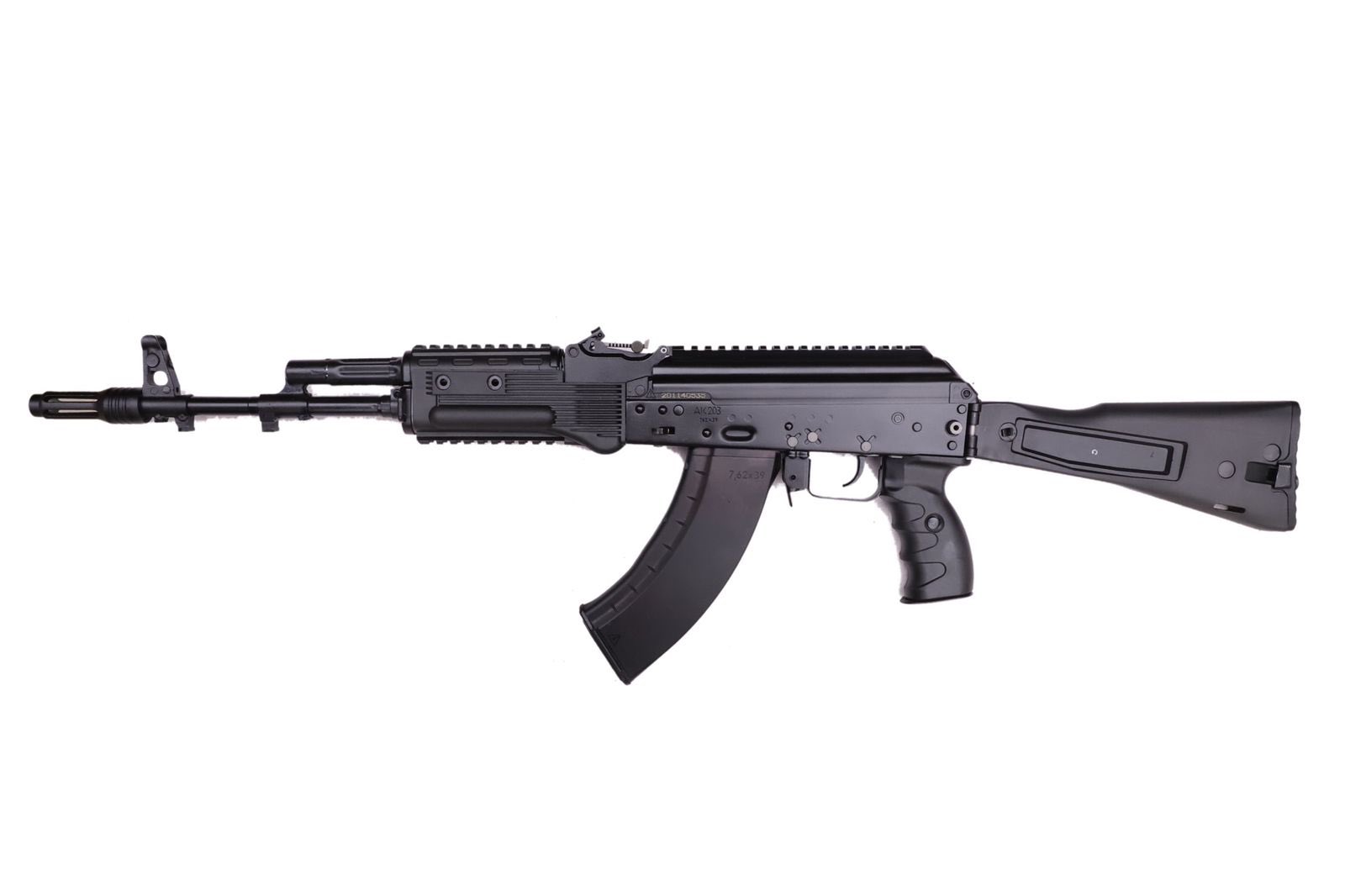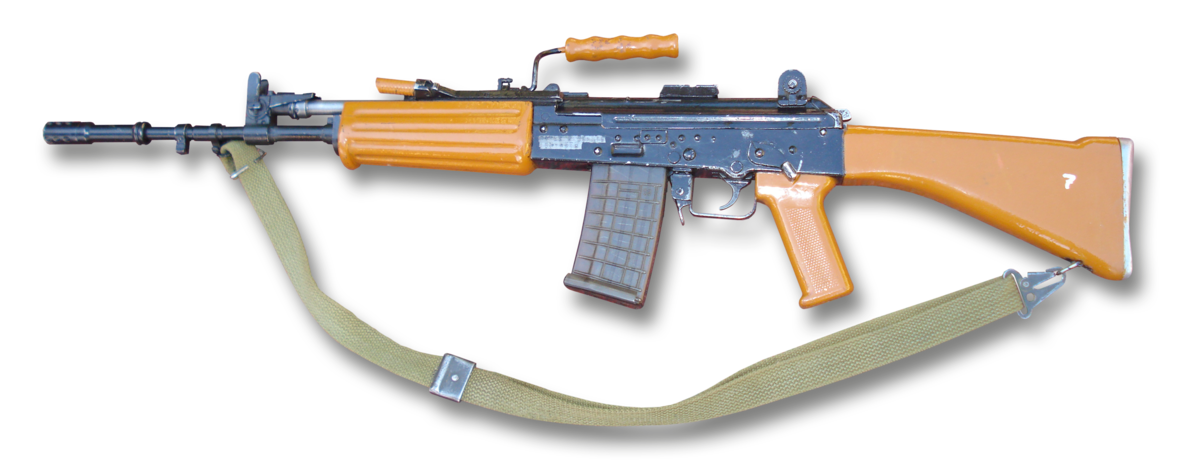India and Russia have finally concluded the AK-203 deal. India’s Defense Minister Rajnath Singh and his Russian counterpart Sergei Shoigu on December 6 signed several agreements and most important being the manufacturing of AK-203 assault rifles in the country.
The move is seen as a big boost to India’s defense industry as part of the government’s ‘Atmanirbhar’ or the self-reliance initiative.
New Delhi has approved a plan to manufacture more than five lakh AK-203 assault rifles in Korwa, Amethi. The transaction is valued at Rs 5,124 crore, reported Economic Times.
The project will most likely be carried out by Indo-Russian Rifles Private Ltd (IRRPL), a special purpose joint venture. It has been developed in collaboration with India’s OFB [now Advanced Weapons and Equipment India Limited (AWEIL) and Munitions India Limited (MIL)] and Rosoboronexport (RoE) and Kalashnikov concern of Russia.

This is not the first time India and Russia are jointly developing a weapon system. The two friendly countries jointly produce the BrahMos supersonic cruise missile. However, the JV to produce these assault rifles will give a major fillip to the Indian Army’s operational capability and the Modi government’s ‘Make in India’ initiative.
Apart from that, an agreement was reached on a protocol to revise cooperation in the production of the Kalashnikov-series small guns.
The agreement has been signed in the backdrop of Russian President Vladimir Putin’s visit to India for the India-Russia Annual Conference. To this date, Russia remains a committed defense partner of India, with the latter in the process of receiving Russia’s S-400 air defense systems by making a mammoth gamble against its western partner, the United States.
Indian Endeavor To Produce AK-203s
India and Russia had signed a pact in 2019, but the deal got stuck due to royalty payment issues. Now, with the signing of the agreement on December 6, the matter has been resolved, according to Janes.
The AK-203 rifles will be manufactured at the Indo Russian Private Limited (IRPL) factory in Korwa, Uttar Pradesh, in the Amethi district which was inaugurated by Indian Prime Minister Narendra Modi in March 2019.
Honourable Prime Minister Shri Narendra Modi talking about the joint venture between Korwa Ordnance Factory and Kalashnikov Concerns at Kauhar in Amethi. He dedicated the Indo-Russia Rifles Pvt Limited to the nation today.#MakeInIndia @nsitharaman @narendramodi @DrSubhashMoS pic.twitter.com/f6Z6Oq0Os2
— Defence Production India (@DefProdnIndia) March 3, 2019
Indian firms will own a 50.5 percent stake in IRPL, while Kalashnikov and Rosoboronexport, the Russian defense export agency, will have 42 percent and 7.5 percent stakes respectively.
It’s worth noting that the Rashtriya Rifles (RR) and infantry regiments of the Indian Army are among the largest users of Kalashnikovs. Both of these regiments are posted in the most insurgency-hit areas of India such as the Kashmir valley and the Northeast.
As part of the technology transfer process between the two countries, the first 70,000 rifles will feature Russian-made components. The Indian Army will receive the first delivery of 70,000 rifles 32 months after manufacture begins.
What’s So Special About AK-203s?
The AK-203 assault rifles will replace the indigenous INSAS assault rifles, which have been in service with the Indian security forces for more than two decades. The contemporary version of the Russian-origin rifle is lightweight and sturdy, with an effective range of 300 meters, or more than three football fields.
The new rifles’ current technology will allow them to use high-tech add-ons like customized sights and grips, which are useful for special forces’ missions. According to the government, assault rifles will improve the Indian Army’s operational efficacy in counter-insurgency and counter-terrorism operations.
While the AK-203 weighs 3.8 kg, INSAS weighs 4.15 kg without the magazine and bayonet. The INSAS rifle is 960mm long without the bayonet, while the AK-203 is 705mm long with the stock folded.

This would make the AK-rifle more portable and mobile as compared to the INSAS, and hence more suitable for counter-insurgency operations.
The AK-203 employs 7.62x39mm ammunition instead of the 5.56x45mm bullets used by INSAS, making it more lethal. The INSAS has a 400-meter effective range, whereas the AK-403 is believed to have an 800-meter sighting range. In comparison to the INSAS rifle’s 20 round capacity, the AK-203 magazine holds 30 bullets.
According to reports, the INSAS rifle can fire single shots as well as three-round bursts, whereas the AK-203 rifle can fire in both automatic and semi-automatic modes. While the INSAS rifle fires at a faster rate of 650 bullets per minute, the AK-203, which fires at 600 bullets per minute, is thought to be more accurate.

Despite the fact that both rifles are gas-operated and have a rotary bolt-locking system, the AK-203 features a folding adjustable butt-stock, ergonomic pistol grip, and a selector with an additional tab for the trigger finger, making it easier to grasp and operate.
The plan to replace the INSAS has been in the pipeline for a while but was kept in a lurch owing to differences on both sides related to the deal. Ground troops stationed in battle locations around the country have complained about INSAS guns, prompting the decision.
For nearly a decade, India had been hunting for a new rifle to replace its aging INSAS. All the specifications make the AK-203 an obvious and superior choice. It is also expected to boost the morale of the soldiers in combat areas and reduce the maintenance costs of old rifles.
The AK-203 deal is expected to come as a boost to local industries by procuring raw material supplies for them. It could be seen as a win-win, for the force as well as the industry.
- Contact the author at sakshi.tiwari9555@gmail.com
- Follow EurAsian Times on Google News




